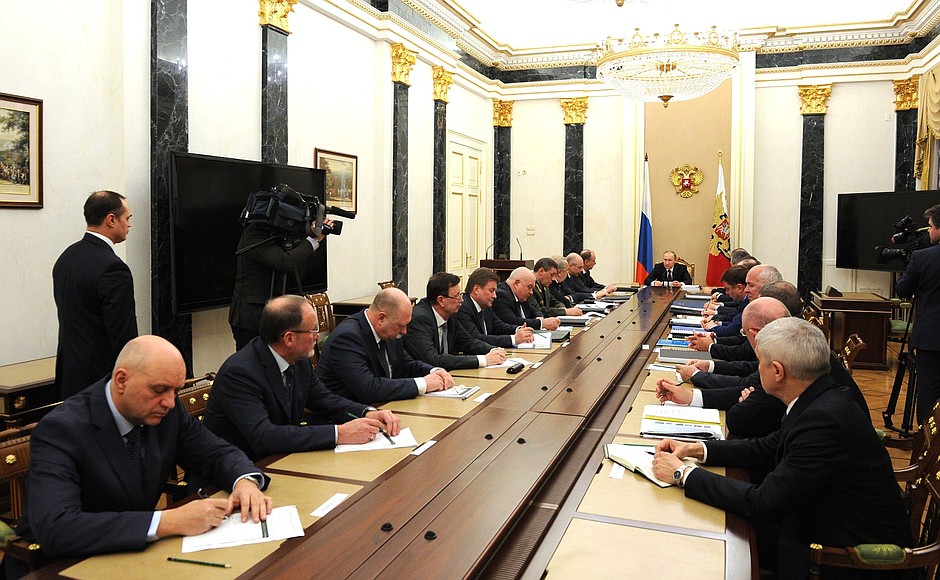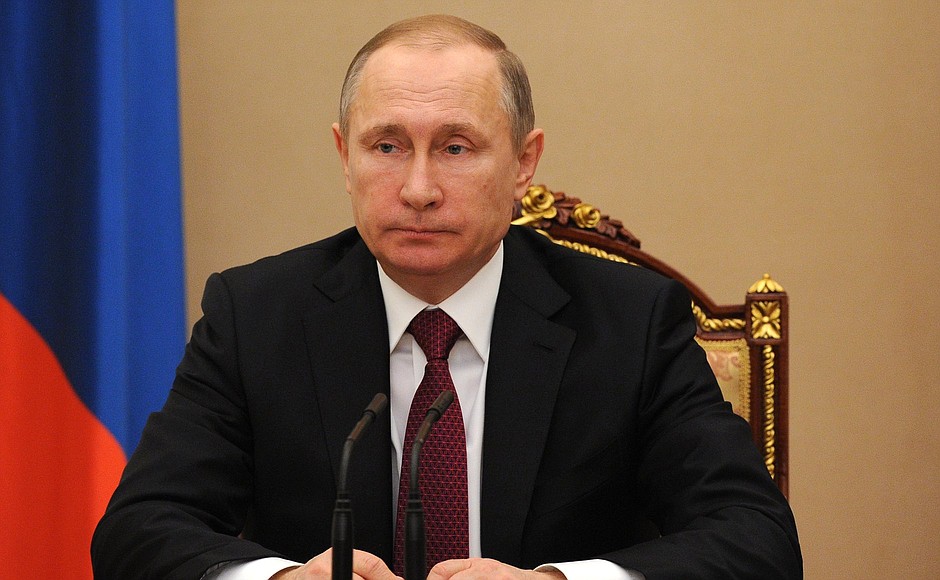President of Russia Vladimir Putin: Good afternoon, colleagues.
Today we will discuss the development of the Advanced Research Fund. We will consider the implementation of its main projects and how they are assisting the development of applied research. We will look into short-term tasks and how the research and technologies are used or can be used to enhance the country’s defence potential.
I would like to begin by saying that over the past three years the Fund has developed a system to select new high technology ideas and models that, as I have said, can be used by our defence industry. Some of them are unsurpassed in the world. It is important that the innovations that are being put forth are practically ready for use, and I will get back to this in my introductory remarks, meaning that they can be applied in various civilian branches of the economy.
The Fund’s Supervisory Board considered the recommendations of the scientific and technical council and approved several dozen projects, seven of which have been completed, while the others are still underway. It is noteworthy that in the course of project implementation a number of truly breakthrough technologies were developed. Unusual solutions were found for complicated engineering and technical problems – something our scientists and weapons designers have always been famous for.
The Fund’s projects are obviously called upon to play a decisive role in the development of key elements of new generation munitions and military and special equipment. They are to become the basis of the national armaments system in 2025–2030 both for the army and navy, and, as I have said, for a number of production sectors and other security agencies.
I would like to single out the fact that the Fund’s projects should fully meet the requirements that are at the basis of the new State Armament Programme. With this aim in view, the Fund should work more actively in all the key areas. The allocated funding should be used in an extremely efficent manner.
We are all aware of the developments in the world economy and the world markets where we have an especially strong presence, and how this applies to our revenue, particularly to budget revenues. Therefore, if there is anything that is not an absolute priority, we may have to set some of these things aside, as they say. However, this should be done after special consideration and analysis.
What is absolutely clear is that we need to complete work on the projects already underway, those that our army and navy require urgently. I am referring here to prospective army gear, small arms and surveillance systems.
Another priority area is assistance in the development of innovative armaments systems and military equipment, as well as technologies for their creation, with special attention going to combat, special and dual-purpose robotic units.
The Fund’s potential should be used more efficiently in the creation of an electronic component base built on new physics principles and in the development of high-precision armaments and dual application technologies, including those pertaining to the development of the Arctic.
Generally, I would like to stress once again that wherever possible we must ensure the application of the new technologies in civil branches of the economy as well.
Next. I believe that the Fund’s capabilities make it possible to expand its areas of expertise. The unique testing and special laboratory equipment and highly skilled staff should be made full use of, while the organisational experience of project implementation should be applied in other areas, such as the creation of production and training centres.
I would like to stress that the tasks facing the Fund require a comprehensive approach, which includes funding. This is something I have already mentioned. We must make better use of the opportunities offered by the law On the Advanced Research Fund, including various forms of public-private partnership. This would make it possible to achieve funding corresponding the Fund’s action plan and, as I have said, to apply many of the technologies they developed in the interests of civilian production, civilian industries, as well as the social sphere.
I suggest we discuss this in detail today.
Finally, another item on our agenda is the approval of the heads of our leading defence companies, their chief designers. We have already appointed 11 people; today we will consider another 8 contenders. Thus, we will have appointed chief designers to practically all the initial prospective projects.
<…>

